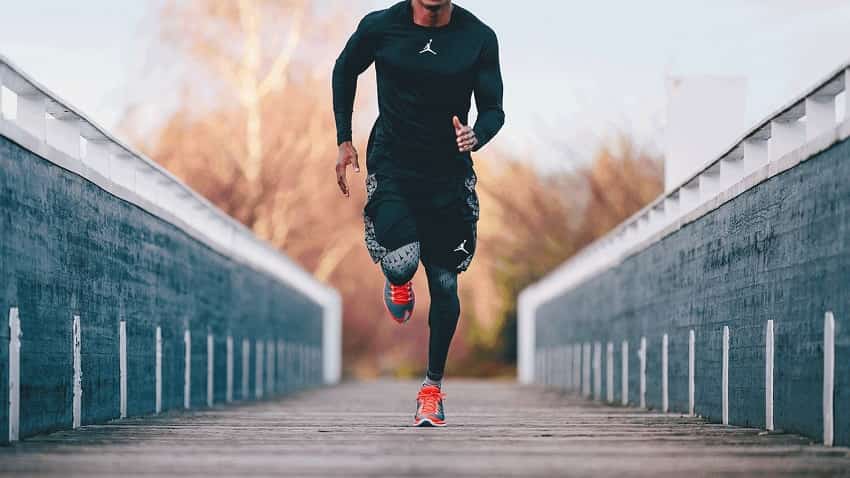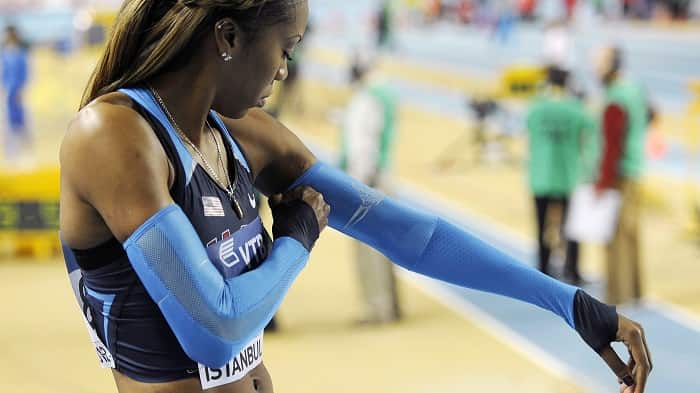
It seems like just about everyone wears it nowadays. Whether you are a triathlete, a lifter, or an athlete across just about any field of battle odds are good you’ve competed against someone or rocked out compression garments at one point.
But does wrapping yourself in compression gear actually do anything for performance? Is it worth dropping a few hundreds dollars to mummify yourself in fancy-pants spandex, whether for yourself or as a gift for the athlete in your life?
We’ll take a look at the research behind compression gear, how it works, what it does for you and performance (and what it doesn’t do), and also compare some of the top compression gear brands.
The Research: Does Compression Gear Work?
Fortunately, there has been a fair amount of research done on compression gear.
Here’s a sampling of the research and what they’ve found so far:
In a study done on runners, who ran distances from 800m to a marathon, they were wrapped in compression gear and measured for a host of different markers, including oxygen uptake, cardiac output, core temperature (real and perceived), time to exhaustion, and more.
While there were no significant differences in running performance or strength related tasks following running, there were small positive differences for time to exhaustion, running efficiency, and clearance of blood lactate.
- See also: Protect your elbows and max out your heavy lifts with a look at the best elbow sleeves for weight lifters.
Core temperature was moderately affected, while post-running soreness, fatigue and inflammation was significantly reduced.
A group of soccer players were thrown onto treadmills and ran for 40 minutes. Each of the 15 players wore a compression garment on one thigh, while going au naturel on the other thigh. The thigh rocking out the compression gear sustained 26.7% less injury and soreness (as measured via biopsy and MRI) compared to the control thigh.

Other research studies covering compression gear:
- Recreational runners reported feeling less soreness 24 hours after performing a 10km time trial while wearing knee length compression stockings. [1]
- A group of women did 100 drop jumps, and did a recovery protocol that included either wearing compression garments on their lower limbs for 12 hours, a passive recovery, or wearing compression garments, and then getting a 30-minute massage. Both treatment protocols greatly reduced decreases in squat jump performance, countermovement jump performance, and reduced soreness. [2]
- A half dozen runners hopped on a treadmill and ran at 80% of their respective VO2 max for 15 minutes. Rate of perceived effort remained unchanged whether the runners wore compression pants or shorts. There was lower energy expenditure, however, when compression gear was worn, with researchers suggesting that the garments promoted additional circulation and decreased muscle oscillation. [3]
- A group of rugby union players wore a pair of compression pants vs a placebo pair of tights for 24-hours following a series of circuits that were designed to simulate a rugby game. The players then performed a bunch of sprints followed by a 2-mile run. (A week later they switched pants and did the test again.) When compression pants were worn sprint times increased, time to fatigue between the sprints decreased, and there was considerably less soreness two days after testing. [4]
When Should Compression Gear Be Worn?
Okay, so even though wearing compression gear might make you look like a pro, there isn’t really any proven performance benefits to wearing it while working out. (This study of elite runners is just one that found no performance benefits.)
That being said…
Where compression gear is super helpful is in recovery. The garments indirectly provide a performance benefit by quickening recovery. This is accomplished by the garments quite literally squeezing you gently, promoting blood flow and reducing inflammation.
Serious athletes and gym-goers know that in order to get the most of their workouts they need to crush their recovery between sessions—and as far as low-maintenance ways to boost your recovery compression garments are about as easy as it gets.
See Also:
5 Best Knee Sleeves for Working Out. Protect your joints and protect your knees. Here are my top picks for the best knee sleeves for keeping your joints healthy.
The Benefits of Weightlifting Shoes. They are cumbersome, heavy, and aren’t useful for much else besides lifting really, really heavy amounts of weight. Here’s how Olympic weightlifting shoes can help you boost things in the gym.
The Foam Roller: How 20 Minutes a Day Will Boost Your Workouts. The foam roller is one of the must-have tools in every serious athlete’s arsenal. Here is just how effective this tool can be in helping you achieve your workout goals.